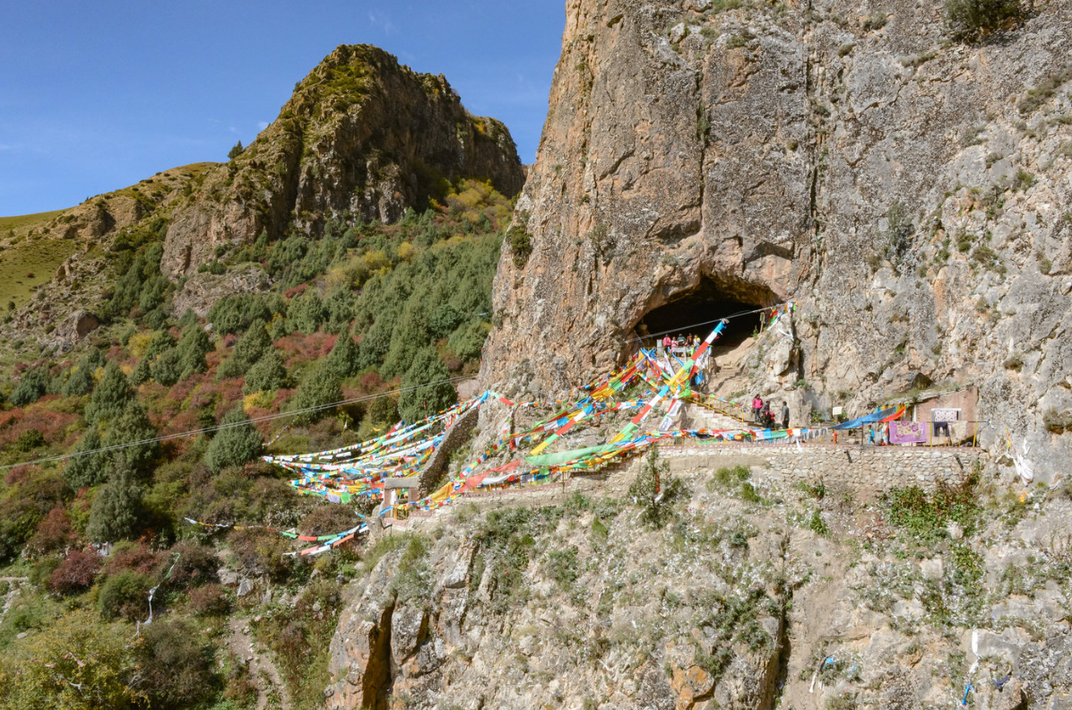Denisovan Fossil Is Identified Outside Siberia for the First Time
A jawbone discovered in a cave on the Tibetan Plateau shines new light on several mysteries that had surrounded the ancient hominins
/https://tf-cmsv2-smithsonianmag-media.s3.amazonaws.com/filer/cb/ab/cbab4368-bb2b-4a91-b060-2ddffb908911/screen_shot_2019-05-02_at_12655_pm.png)
Fossil evidence of the Denisovans, an extinct hominin species first identified in 2010, has for years been limited to a few fragmentary specimens found in a single Siberian cave. But there were hints that our ancient cousins had travelled far beyond this little pocket of the world; modern humans in East Asia, Australia, the Pacific Islands and the Americas all carry Denisovan DNA.
Now, according to Carl Zimmer of the New York Times, a new scientific paper in Nature has revealed that a hulking jawbone discovered high on the Tibetan Plateau in 1980 belonged to a Denisovan. The landmark research marks the first time that Denisovan fossil evidence has been identified outside Siberia, bolstering scientists’ suspicions that the mysterious hominins were once widespread across East Asia.
The modern-day story of the mandible begins with a Tibetan monk who, in 1980, stumbled upon the fossil while praying in a cave located some 10,700 feet above sea level in Xiahe, China. The monk turned the jawbone over to the Sixth Living Buddha, a religious figure, who in turn passed it on to Lanzhou University in northwestern China. There, the fossil sat for some three decades, until climatologist Fahu Chen and archaeologist Dongju Zhang began studying it in 2010—around the same time that knowledge of the Denisovans was first coming to light.

Though the jawbone looked human-esque, its lack of chin indicated that the fossil did not belong to modern humans. The molars still stuck in the mandible were also unusually large, and appeared different in shape from the teeth of Neanderthals, a close relative of Denisovans. (Recent evidence, in fact, has revealed that Denisovans mated with Neanderthals.) But Zhang tells Ed Yong of the Atlantic that, at least initially, she “never imagined that [the Xiahe mandible] could be a Denisovan.”
Hoping to learn more about the specimen, Zhang and her fellow researchers conducted a small excavation at the cave where it was found. They unearthed prehistoric tools and animal bones with signs of cut marks, suggesting that some type of ancient human had lived there.
The investigation ultimately expanded to include scientists from several international universities and institutions. Dating of a carbonate crust attached to the mandible revealed that the specimen was at least 160,000 years old, likely making it the oldest-known hominin fossil from the Tibetan Plateau. The minimum age of the jawbone also “equals that of the oldest specimens from the Denisova Cave,” says study co-author Chuan-Chou Shen of the Department of Geosciences at National Taiwan University.
While the researchers were not able to find any traces of DNA preserved in the fossil, they were able to extract proteins from one of the jawbone’s teeth. “Proteins are composed of a sequence of amino acids, and this sequence is coded for in the genome,” explains study co-author Frido Welker, a molecular anthropologist with the Max Planck Institute and the University of Copenhagen. “[A]ncient proteins survive longer than DNA, making them a suitable molecular alternative for evolutionary analyses in cases where ancient DNA does not survive, like the Xiahe mandible.”
Analysis of these proteins led to the researchers’ major discovery: The Xiahe specimen was closely related to Denisovans from the Siberian cave.
The results of the investigation not only confirm that Denisovans did, in fact, exist outside of Siberia, but also help fill in gaps in the genetic history of modern Tibetans. Sherpas and other Tibetans who inhabit inhospitable altitudes carry a unique gene that helps them breathe easily at heights where the limited supply of oxygen would make most people ill. Recent research has shown that the adaptation was inherited from the Denisovans, but it was “difficult to reconcile” these findings with previous discoveries at the Siberian cave, which is located at a relatively low altitude, the study authors write.
The new fossil evidence, however, points to Denisovans occupying the high altitudes of the Tibetan Plateau—a region known as the “Roof of the World.” These ancient hominins had likely “adapted to high-altitude low-oxygen environments long before the regional arrival of modern Homo sapiens,” says Zhang. And when Denisovans mated with modern humans, they passed the adaptation on.
In light of the new discoveries, the researchers hope to take a closer look at other Asian fossil specimens that bear morphological similarities to the Xiahe mandible. As Welker writes, “maybe they, too, will one day turn out to be Denisovans.”